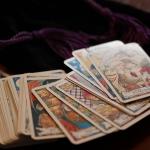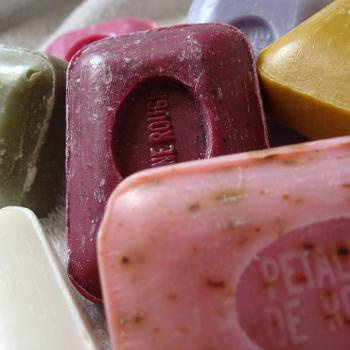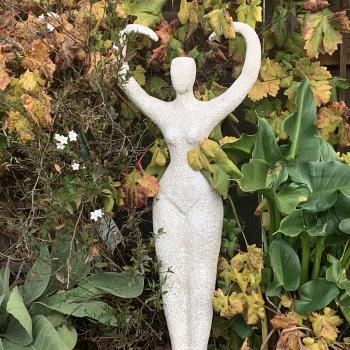All around my house you’ll find cauldrons. I have a large replica of the Gundestrup Cauldron on top of one prominent altar. There’s a collection of mini cauldrons nestled on the wood burning stove. I have cauldrons filled with beans for sorting. Another with drops of Awen (okay, they are gold coloured marbles but they are Awen to me) and two in my office that I work magic with each morning. The cauldron, for me, is the perfect metaphor for the way I do my magic.
Emptiness and Potential in a Cauldron
I spent years studying Tibetan Buddhism in the Gelugpa lineage. One of the central tenets of Buddhism is The Heart Sutra and it deals with Emptiness. Emptiness is described not as the lack or absence of anything but rather the potential for almost anything to arise from that emptiness. In my witchcraft, the corollary to or symbol of Buddhist Emptiness is the cauldron.
There’s never a time when my cauldrons are filled with nothing. They might not contain a particular obvious thing in them, but that’s not the same as saying they are devoid of anything. There is something in the cauldron at all times. What that something might be depends largely on how I approach working with it. Before beginning any magical undertaking, I ask myself and the cauldron and my guides and my intuition, just what might want to issue forth as a result of the magic that’s being called forward.
Saying that another way, my cauldron has the potential to produce almost anything because just about everything is already in it. It’s just a matter of re-configuring everything into one thing.

Intention and The Cauldron
Before I start any working I go through a type of checklist, if you like. I ask myself why am I taking on this particular piece of magic? What might I need to complete this spell? What would this magical spell look like, under ideal circumstances? How would I know the result if, indeed, it comes to fruition? Knowing the What and the Why of the magic determines a lot of the How of the magic.
Most people that know me, know I love to cook. Cooking is a great metaphor for cauldron magic. If I want to make a stew, buying the ingredients for a yellow cake isn’t going to net the result I’m looking for. If I have all of the correct ingredients for a stew but follow the recipe for a soup, my concoction won’t be quite right either. So knowing what I want the result to be, at least generally, has to be the first step. Now I have my intention, I can get about filling the Cauldron with exactly what I need.
Filling The Cauldron
Now this filling of the cauldron business occurs on three levels. I do actually take real things like herbs and liquids and stones and bits of this and dashes of that (the proverbial eye of newt and wing of bat) and make a brew or elixir or paste or poultice. In alchemical terms, this is the prima materia. When my brewing is done I will have a tangible manifestation of the magic I’ve been making. Depending on what I’ve just made, I can apply it, wrap it, or eat it as the spell calls for.
Now the next level is a bit divinatory in nature, I suppose. Looking at what’s in the cauldron gives me a sense of how my magic might turn out. I can use what’s actually been made in the cauldron as a benchmark for what’s occurring in the magical realm. If my stew looks soupy, my magical outcome could well be a bit watered down as well.
Lastly, there’s the realm of mystery and potential. What occurred during the brewing process that I didn’t plan for? Maybe one flavour came through stronger than another. Perhaps the goop was more goo and, as it turns out, adhered better to the thing I was pasting the goo with. See, there’s this element of mystery and something happens here that I think many witches and magic workers forget about in their spell work.

The Full Cauldron
Looking back at the many cauldrons we find in mythology and lore, there’s often an action that has to be completed to make sure the potion being brewed is effective. In the story of Gwion Bach and Ceridwen, the cauldron has to be stirred three times a day for a year and a day to produce the three drops of Awen. There’s also something else rather interesting about this story too, that’s found in other cauldron stories. The brew in Ceridwen’s cauldron becomes deadly poisonous right after the concoction has worked it’s magic. The cauldron breaks and the contents seep into the ground and nearby streams.
There’s a lesson here for me about the magic I enter into. I have to use whatever it is I’m making in the cauldron just once. Use it again and it can become poison. Put it to work for another purpose and it will taint the water system, so to speak. And although “moderation in all things” is a phrase you’ll rarely hear coming out of my mouth, when it comes to magic, I think this is an appropriate measure to follow. For me, the phrase could easily become “Do your magic well. Do your magic once.”
The Cauldron And The Magic Work Together
The cauldron then is the both the container of the magic and an active participant in the spell work. One might say that it is actually the most important ingredient in the whole process for without the it, there’s nothing to put the other bits and bobs into.
The mystery of the cauldron permeates all of the work and play I do with magic. One could posit, and it is true for me, that the cauldron is the absolute quintessential piece of magical equipment that one needs to do effective, practical spell workings.
















